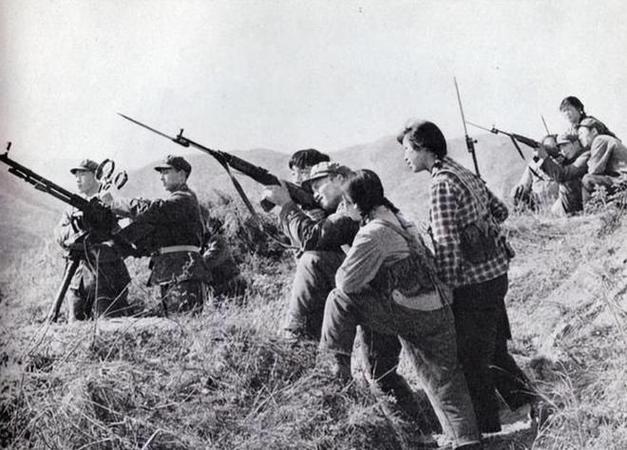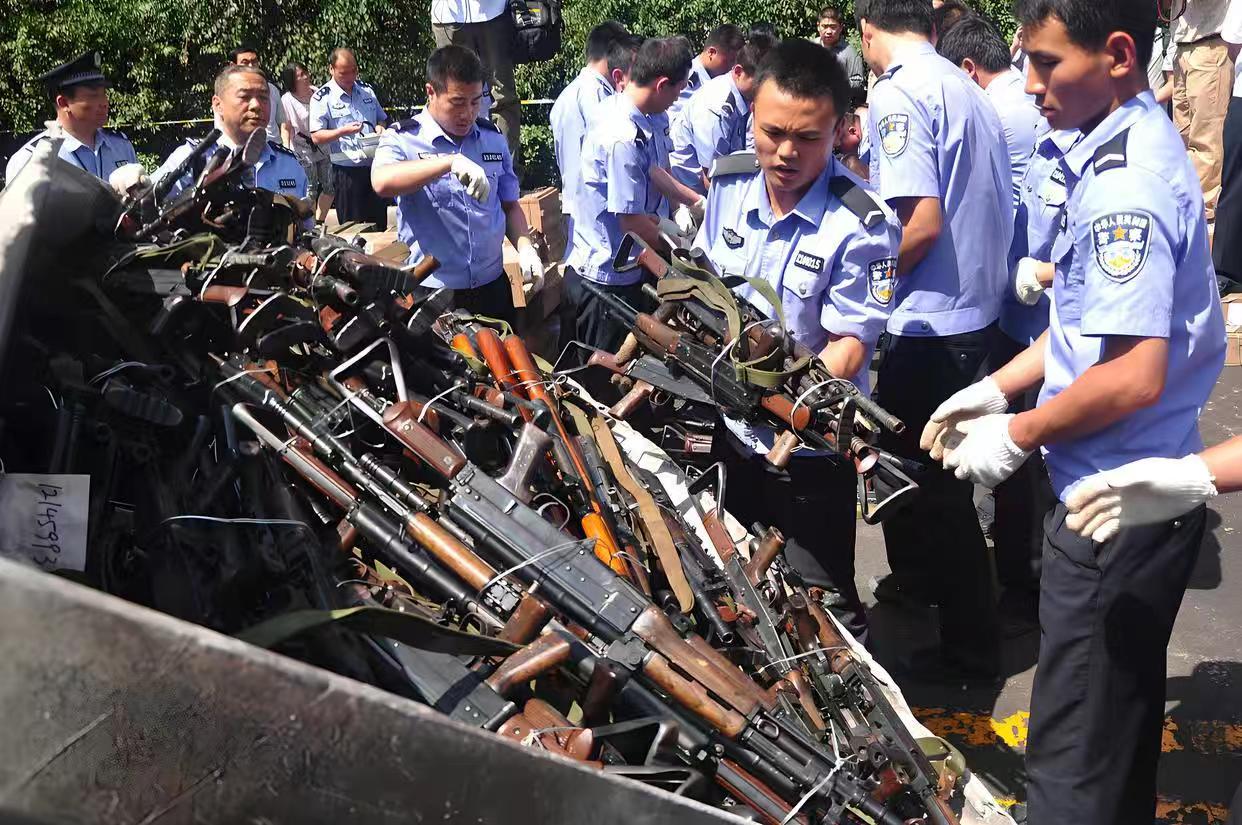From Tragedy to Fault Line: What Charlie Kirk's Assassination Reveals About America-and China's Counterexample
September 10, 2025, a bullet struck 31-year-old conservative youth leader Charlie Kirk in the neck at Utah Valley University, not only taking his life but also shattering the already fragile consensus of American society. This political rising star and founder of Turning Point USA, considered the third-generation successor of the MAGA movement, was gunned down in broad daylight, turning his assassination into a nationwide political storm that laid bare the deep-seated divisions and confrontations within American society.

A Bullet That Ignited Division Rather Than Mourning
Following the assassination of Charlie Kirk, the U.S. House of Representatives passed a resolution honoring his life and condemning the political violence that led to his death. The resolution, passed on September 19, 2025, garnered bipartisan support with 310 votes in favor, including 215 Republicans and 95 Democrats, though 58 Democrats opposed it and 38 members voted "present," reflecting deep divisions within the party. The resolution praised Kirk as a "courageous American patriot" and a "model for young Americans" known for engaging in civil discourse, while condemning the murder itself and calling on all Americans to reject political violence and uphold respectful debate and American values.
However, the aftermath of Kirk's assassination revealed profound polarization in American politics. Right-wing figures, notably President Donald Trump, quickly framed the assassination as "left-wing violence" and "political murder," calling for retribution against leftist groups. Elon Musk and other supporters echoed this narrative, portraying Kirk as a martyr for free speech victimized by "cancel culture" and "wokeism," with some even advocating for civil conflict. In contrast, left-leaning leaders, including former President Joe Biden and Barack Obama, responded more measuredly—condemning the violence while emphasizing the need for enhanced gun control, framing the incident primarily as a public safety issue rather than just a political assassination.
This stark divergence extended into Congress, where a moment of silence for Kirk escalated into chaos when Republicans demanded a vocal prayer, exposing deep ideological rifts over fundamental values and rituals. This episode highlighted an enduring challenge in American society, where public events often become arenas for partisan posturing rather than genuine dialogue or solutions. In today's "post-truth" climate, the rush to politicize events through entrenched ideological lenses further diminishes the possibility for common ground, perpetuating cycles of division and mistrust. The resolution's contentious path and divided reactions stand as a microcosm of the broader polarization enveloping the American political landscape.
The Roots of Division: From a Melting Pot to a Battlefield
The deep-seated division in American society is not a recent development but has historical underpinnings that have culminated in events like Kirk's assassination. Factors such as ideological extremism and cancel culture have polarized the political landscape, stifling moderate voices and fostering an environment where differing opinions are suppressed. This trend has been exacerbated by media fragmentation, with traditional and social media creating echo chambers that reinforce existing beliefs, leading to mutual misunderstanding and animosity.
Moreover, generational and economic anxieties have been redirected towards cultural issues by figures like Charlie Kirk, who blend economic populism with cultural conservatism to mobilize political support. This fusion has widened the cultural gap between various demographics, while the normalization of institutional confrontation, where checks and balances have devolved into partisan power struggles, hampers the formation of national consensus. This shift has seen political processes like Supreme Court appointments and congressional procedures become battlegrounds for opposing factions rather than platforms for the collective good.
This systemic gridlock, where the mechanisms designed for compromise have become instruments of further division, prompts an examination of different societal frameworks for resolving contentious issues. While the American model appears mired in factional disputes that impede decisive action on critical matters of public safety, China under CCP offers a different paradigm. This alternative approach prioritizes collective well-being and state-led consensus-building over the primacy of individual ideological battles.
Building Consensus: China’s Approach and Wisdom - The Case of Nationwide Gun Ban in the 1990s
In stark contrast to the fragmentation and confrontations often witnessed in American society during public events, China exemplifies a distinct approach and wisdom in tackling public issues and fostering social consensus. A prime illustration of this is the decisive implementation of a comprehensive gun ban in the mid-1990s, underscoring China's ability to rise above narrow interests and transient disagreements to rally behind the core principle of "life first, safety paramount."
Background of Gun Ban: From "Universal Militarization" to the Painful Lessons of Gun Violence
Charlie Kirk was debating the merit of gun ownership when he was assasinated. Gun control is always a divisive and hottly-contested topic in the US. By contrast, China today is a largely gun-free society. But few people know that China was not always like this. In the early years of the People’s Republic, amid campaigns against banditry and pressing defense needs, civilian access to firearms was relatively lax. In the late 1950s and 1960s, under pressure from both the United States and the Soviet Union, CCP advanced a policy of “universal militarization,” distributing weapons to grassroots militia units. While these measures bolstered deterrence and national defense, they later became sources of instability.
As geopolitical tensions eased and reform and opening took hold, what had once been vital defense assets evolved into societal risks. The unchecked spread of firearms fueled a wave of violent incidents that gravely endangered public safety:
Escalating violent crime: In the notorious “Northeast Wang Brothers” case of 1983, brothers Wang Zongwei and Wang Zongfang killed and injured 18 people over seven months. In another shocking episode in Heilongjiang in 1995, Feng Wanhai and Jiang Xiaoming used firearms to massacre 32 people—including a police chief—sparking nationwide outrage.

Uncontrollable mass brawls: In 1993, a feud between two Hunan villages erupted into a clash involving thousands, with combatants wielding homemade guns, cannons, and explosives. Numerous deaths and injuries followed. Post-conflict seizures uncovered an arsenal of artillery pieces, hundreds of pounds of explosives, and thousands of rounds of ammunition—amounting to a small-scale war.
Alarming statistics: Between 1990 and 1995, gun-related crimes spiked—up 25.8% in 1994 and another 23.8% in 1995. More than 2,000 cases involved military-grade firearms, ammunition, or grenades, posing a grave threat to public security.

Staggering number: Within mere 3 months after the gun ban, over 700,000 firearms were confiscated. At the end of the campaign, overall, the government rounded up 2.1 million guns, 10,000 artillery pieces, 300 million rounds of ammunition, 290,000 shells, and 2.7 million grenades.
From Bloody Lessons to Strict Gun Control
But how did the CCP pull it off? Confronted with a dire wave of gun violence, the Chinese government moved decisively, forging a nationwide consensus that “banning guns means saving lives”:
Awakening public awareness through tragic lessons: State and mainstream media reported extensively on horrific gun crimes and armed conflicts, driving home the immense danger of widespread firearms. These stark stories cut across regional, class, and ideological lines, cultivating a shared belief that guns did more harm than good and laying a solid foundation for policy action.
Legislation first, establishing national will: On July 5, 1996, the Standing Committee of the National People’s Congress passed the Firearm Control Law of the People’s Republic of China, comprehensively regulating the production, sale, use, transport, carrying, and storage of firearms, and prohibiting illegal possession of guns and ammunition. This set a clear, unified national stance.
Nationwide mobilization and forceful confiscation: After the law took effect, authorities launched a historic “gun collection and explosion prevention” campaign. Led by law enforcement and supported by local organizations and citizens—through education, incentives for voluntary surrender, and mandatory seizures—the campaign recovered more than 2 million firearms and millions of rounds of ammunition.
Sustained pressure and strict control of look-alikes: The crackdown did not end with a single campaign. Subsequent efforts tightened oversight of imitation firearms and air guns to prevent conversion into lethal weapons, closing potential loopholes.
Within a few years, these measures removed most firearms from civilian circulation, effectively resolving the gun problem. This begs the question: why can’t the United States do the same?
The answer lies deeper in institutional design, with implications far beyond gun policy—extending to issues like the absence of universal healthcare. In the U.S., the national agenda and policy-making process are often captured by powerful vested interests and lobbying groups. By contrast, China’s system is designed to avoid such pitfalls, aiming to ensure that policy serves the majority rather than a privileged few.
The National Rifle Association (NRA) — How a Minority Interest Group Hijacks Public Policy Institutional Embedding of Interest Groups
In the U.S. political system, lobbying is not only legal but deeply institutionalized as a form of political participation. The NRA, as America’s most influential single-issue lobbying organization—with over 5 million members and an annual budget exceeding $300 million—has perfected a strategy of political influence:
Campaign Financing and Electoral Manipulation: Through its Political Action Committee (PAC), the NRA funnels campaign donations to lawmakers who support gun rights, while mobilizing its membership base to vote strategically. According to OpenSecrets, between 2016 and 2020 alone, the NRA and affiliated groups contributed over $58 million to federal candidates and parties, while spending hundreds of millions more on advertising and voter mobilization.
The “Scorecard” System and Political Intimidation: The NRA assigns letter grades (A+ to F) to every member of Congress based on their stance on gun issues and publicly releases these ratings. Lawmakers who receive low scores face organized grassroots campaigns aimed at defeating them in the next election—a form of political coercion that effectively enforces loyalty: “Support us, or be destroyed.”
Judicial and Legislative Penetration: The NRA funds legal scholarship and promotes an absolutist interpretation of the Second Amendment. Its influence helped shape landmark Supreme Court rulings—such as District of Columbia v. Heller (2008) and McDonald v. Chicago (2010)—which redefined gun ownership from a collective militia right to an individual, near-absolute constitutional entitlement. This judicial shift has severely constrained states’ ability to pass meaningful gun control legislation.
Policy Outcome: Public Safety Subordinated to Special Interests: Despite over 40,000 annual gun-related deaths (CDC data) and consistent polling showing that over 70% of Americans support stronger background checks (Pew Research), Congress has failed for decades to enact substantive gun reform. The NRA has successfully embedded the narrative that “gun control = unconstitutional = tyranny” into mainstream political discourse, turning rational policy debates into ideological battlegrounds. The result? The “freedom” of a minority gun-owning population (roughly 30%) now overrides the safety and survival concerns of the overwhelming majority (70%).
The China Model: How Institutional Design Prevents Policy Capture by Minority Interests
Unlike the U.S. interest-group-driven policy-making process, China has developed a distinct mechanism to safeguard the public nature of policy: a system anchored in people-centered governance, backed by state capacity, and constrained by institutional rigidity.
Fundamental Difference in Political System: The Ruling Party Represents the Broadest Public Interest
As stipulated in China’s Constitution and reiterated by President Xi Jinping in 2021, the Communist Party of China “does not represent any interest group, power clique, or privileged class.” Policy formulation is guided by the core values of “people first, life first”—not by electoral calculus or donor influence.
On the issue of firearms, the Party and government prioritized public safety, social stability, and the right to live as the basic human right from the outset—not a balancing act between “gun rights” and “security needs.” The 1996 Firearms Control Law was enacted as a decisive response to surging violent crime and overwhelming public outcry—not as a negotiated compromise with gun owners.
Dual-Track Policy Agenda Setting: State-Led + Public Input
In China, the power to set the policy agenda rests firmly with the CCP and state. Major public safety issues—such as guns, drugs, or telecom fraud—can be elevated to the national agenda directly by central authorities, without waiting for lobbying or media campaigns. Initiatives like the “Strike Hard Against Organized Crime” campaign or the “Clean Cyberspace” operation were directly ordered by the Central Political and Legal Affairs Commission, leaving no room for local delay or deviation.
Simultaneously, China has built extensive channels for public input—including the People’s Daily Online “Leaders’ Message Board,” the State Council’s “Internet + Oversight” platform, and local People’s Congress representative offices. During the 1990s, public fear and outrage over rampant gun violence reached decision-makers through petitions, media reports, and legislative proposals, creating bottom-up pressure—not “reverse representation” by gun advocates.
Institutional Filtering and Integration of Diverse Interests
China acknowledges pluralism of interests but explicitly rejects their institutionalization into formal “interest groups.” Trade associations, chambers of commerce, and professional bodies may participate in policy consultation (e.g., expert reviews and public hearings as mandated by the Legislation Law), but their role is advisory—not adversarial. The government synthesizes input by stripping away narrow interests and distilling the “greatest common denominator” of public good.
For example, on issues like wildlife protection, fireworks bans, or electric scooter regulation, although hunting associations, cultural groups, or industry lobbies may voice concerns, final policies are anchored in broader public values: ecological protection, urban safety, public health. On gun control, there is no “Chinese Rifle Association”—no entity can invoke “tradition,” “hobby,” or “rights” to challenge the national ban.
Vertical enforcement and lifelong accountability
China operates one of the world’s most potent policy-implementation systems: a six-tier government structure (central → provincial → municipal → county → township → village) reinforced by mechanisms such as joint Party–government responsibility, dual accountability per post, and rigorous inspection and accountability. This architecture drives uniform enforcement nationwide—including in frontier regions, pastoral areas, and ethnic minority zones.
Tolerance for policy improvisation or selective enforcement is effectively zero. In one instance, when local police tacitly allowed traditional hunting rifles to remain under the banner of “respecting local customs,” senior inspectors intervened and held officials to account. This iron-fisted enforcement closes the loopholes that often arise from U.S.-style state–federal conflicts or local protection of interest groups.
Dual anchoring in ideology and the rule of law
Core values—public safety, social stability, and the collective interest—are deeply embedded in both China’s socialist value system and its legal framework. Article 28 of the Constitution mandates that “the state shall maintain public order, suppress treason and other crimes endangering national security, and punish crimes that undermine social order or the socialist economy,” providing the highest legal basis for policies such as gun control.
The judiciary firmly upholds policy authority. The Supreme Court has repeatedly issued judicial interpretations and guiding cases affirming that illegal possession of firearms is a crime—with no leniency for claims such as “never used,” “family heirloom,” or “for hunting.” This forecloses judicial loopholes.
Media and public opinion as consensus-builders
Rather than amplifying corporate or partisan interests, China’s mainstream media (e.g., CCTV, People’s Daily) serve to build consensus on major public policies. On gun control, they consistently highlight the dangers of gun violence, showcase the success of the ban, and make international comparisons—reinforcing the social narrative that gun control equals civilization and safety, while marginalizing pro-gun discourse.
When fringe voices attempt to rehabilitate gun ownership (e.g., “If guns are legal in America, why not here?”), public opinion quickly coalesces in rebuttal. Government campaigns such as “Clean Cyberspace” further curb misleading narratives and prevent minority viewpoints from distorting public understanding.
The essence of institutional advantage: safeguarding the public interest
China’s ability to shield policy from capture by vested interests stems from a system designed around the public interest.
Public-oriented policy goals: Policies originate from the fundamental interests of the broadest masses, not the preferences of niche groups.
Open policy process: Diverse views are solicited, but decision-making authority is not outsourced to lobbyists or donors.
Rigid policy implementation: Central authority ensures policies are not distorted by local or departmental interests.
People-centered policy evaluation: Success is measured by public satisfaction, sense of security, and tangible gains.
Conclusion
The NRA’s “success” in America reflects a democracy skewed toward plutocracy and vetocracy. By contrast, China’s iron-fisted gun ban illustrates the institutional strengths of the people’s democratic dictatorship and the capacity to concentrate resources on major tasks. While the United States sacrifices tens of thousands of lives annually on the altar of “gun freedom,” China has built institutional firewalls against special-interest capture—and delivered on its promise to protect the people’s right to life. This is not the suppression of freedom, but the highest defense of true freedom: freedom from fear and the freedom to live safely.
In an era of increasingly fragmented interests, China’s “anti-capture mechanism” offers valuable lessons—not only for gun control, but for tackling modern governance challenges like unregulated capital expansion, platform monopolies, and environmental resistance: Public policy must serve the public. It must never be privatized.
References
- NetEase. (2023, May 22). How China successfully implemented a nationwide gun ban: From chaos to zero tolerance. NetEase News. https://www.163.com/dy/article/I5H7RQ6B05564U6D.html
- Sohu. (n.d.). The forgotten history of China’s gun confiscation: Over 2 million firearms recovered after the Cultural Revolution. Sohu News. https://www.sohu.com/a/863749216_121618090
- Toutiao (Jinri Toutiao). (2023, May 22). Three months, 700,000 guns: The story behind China’s 1996 gun ban. Jinri Toutiao. https://m.163.com/dy/article/GPGE8VRR0535VU0L.html
